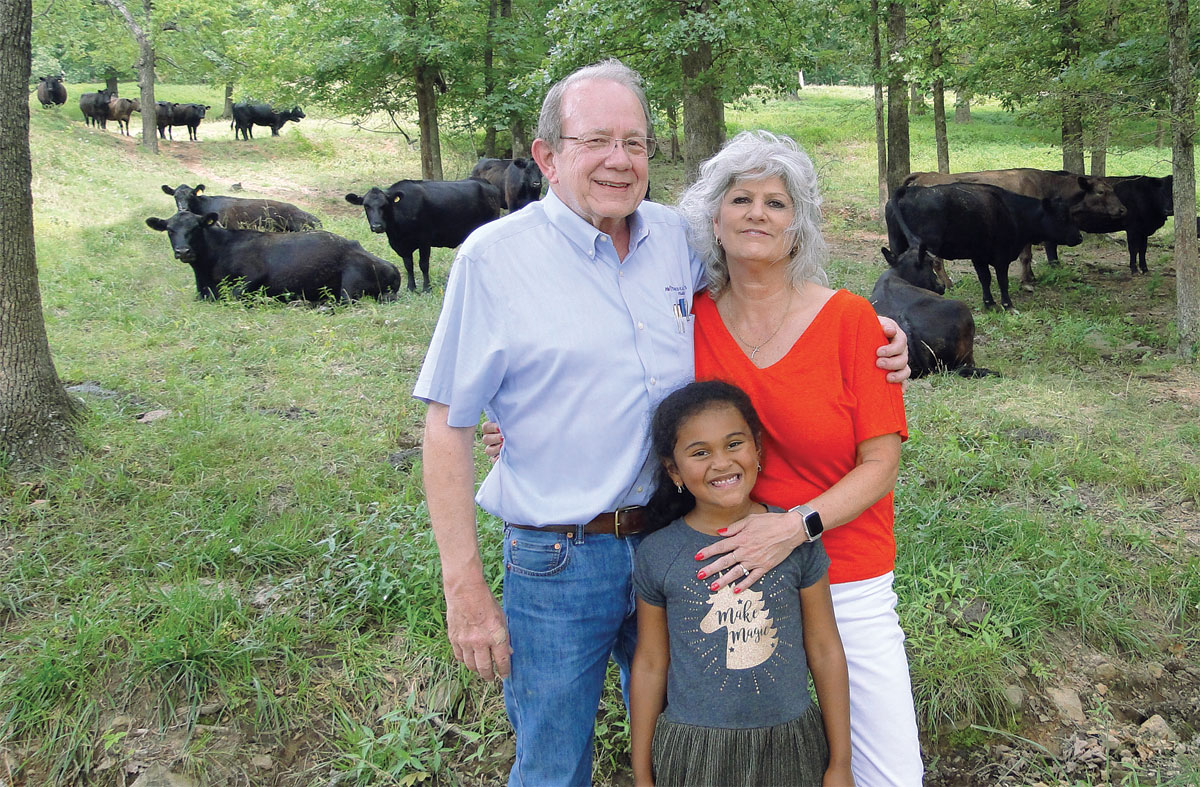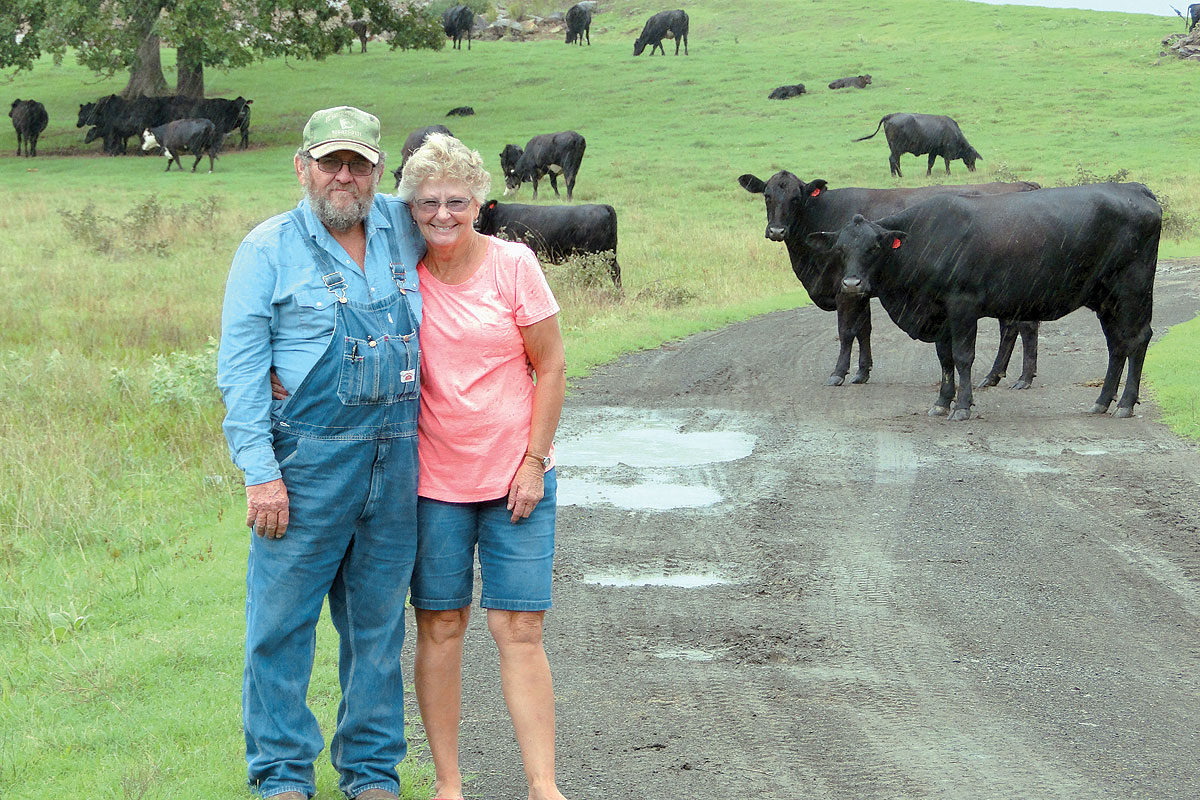
Sometimes the best way to understand a big, complicated situation is to look at one specific story as an example.
Tim Moore’s grandparents, Fate and Oleta McElroy, came to the rural Valley Springs area in 1958 with the extended family now owning and leasing 2,000 to 3,000 acres in the immediate area.
“I am just the third generation here, but every time a piece of land came up for sale or lease, someone in the family was in a position to buy it or had a working relationship with the land owner to lease it,” Tim said.
Both Tim and his wife Wendy have off-the-farm jobs. Tim has been an ag teacher for the Valley Springs School District for 16 years while Wendy, who owned a successful restaurant for 13 years, was ready to leave that environment and now performs massage therapy and hypnosis.
Moore Farms is an 80-acre farm with an additional 350 leased acres on which Tim and Wendy raise commercial beef in addition to alfalfa and mixed grass hay. They also have a sizable custom harvesting and baling operation.
“What keeps us afloat is having multiple avenues to generate income,” Tim said.
One consequence of diversified agricultural income for Tim is carefully integrated cattle and land usage. He purchased their land about the time he started teaching. Tim is in the process of adding additional cross fencing to augment his rotational grazing program.
The rotational grazing causes two factors to come into play. One is the awareness of planning the cross fencing so that reorganization of his water sources which include springs, ponds and rural water will match up efficiently.
Another factor resulting from Tim’s rotational grazing system is less need for fly control, spraying only when needed. For parasite control, both internal and external, Tim uses a topical pour on in the fall. Other cattle health protocol procedures include an annual Vira Shield 6 + VL5 booster, as well as a black leg vaccine with tetanus.
Tim has 150 Angus-influenced mommas with a touch of Brahman to increase mothering characteristics. Though he is now trying to use replacement heifers to replace 15 percent of his oldest cows, he did purchase some cows last November when he bought a whole herd and was able to lease the land. Breeding needs are met by nine full-blooded but not registered Angus bulls.
Tim raises 35 acres of alfalfa and 45 acres of mixed grass horse hay.
“When we’re harvesting our alfalfa, cars are lined up waiting to purchase it because it’s so hard to find,” Wendy said.
Tim sells mostly square bales, though he does offer some round bales and uses Roundup ready alfalfa so he can spray for weeds early in the spring. Insect control is on an as needed basis.
Tim’s land management practices include soil testing after the first and third cuttings and again in the fall, if needed.
“Testing determines exactly what we need and how much of each component in terms of our fertilizer,” Tim explained.
Alfalfa affects the pH level and usually requires lime while the proportion of potash and phosphate in each area can differ. Cattle are wintered on the hay ground.
Tim’s busiest time of year is summer and early fall because of custom harvesting and baling. He harvests fescue seed and wheat, and bales both square and round hay bales. Current and past students make up his summer workforce.
The Moore household is full and busy with six children ranging from age 2 to 14. Showing is part of the routine, especially for the three oldest girls and his son: Gracie, 14; Olivia, 12; and Hattie, 10; Gunner, 5, while Klaudia, 4, and 2-year-old Poppy are very actively watching and learning from the sidelines.
Tim loves the generational feel of his family whose agricultural roots go back far more than the three generations in Valley Springs. He still has his grandfather’s tractor purchased new in 1969,as well as his own first tractor, both of which he never intends to sell.







